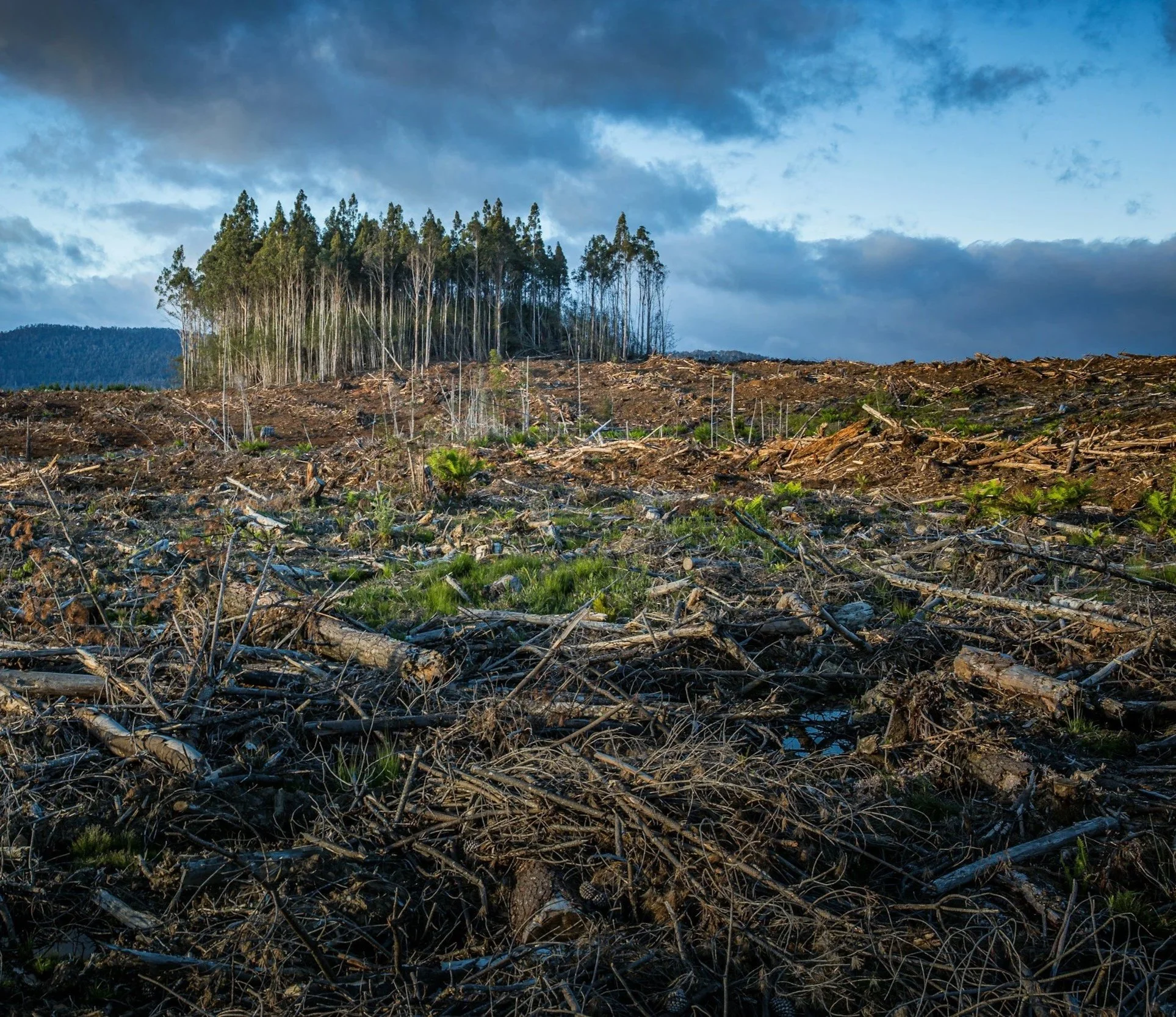False Solution: Biofuels
Biofuels come in three main categories, and are often proposed as alternatives to fossil fuels:
“Renewable” natural gas (RNG), or biogas: methane produced from decomposing manure, sewage, garbage, or other biological material.
Liquid biofuels: plant oils derived from crops like canola, corn, soy, coconut, and palm.
Biomass: wood pellets, wood chips, or other woody material burned for heat or to generate electricity.
What are biofuels?
Problems with biofuels
Many biofuels have the same or worse greenhouse gas (GHG) emissions as fossil fuels over their full life cycle (production through consumption).
Because of limited supply, buying any kind of liquid biofuel leads to increased palm oil production, which destroys tropical forests and soils and drives losses in biodiversity. These associated emissions and climate harms are ignored by official GHG emissions models.
RNG is costly and dangerous to people and climate, and perpetuates problematic fossil gas extraction and infrastructure.
Liquid biofuel crops replace food crops, putting stress on our food system.
Scaled-up biomass also increases biodiversity loss. Importing biomass from afar causes additional transportation emissions.
Scaled-up biomass harvest can release carbon faster than carbon captured from regrowth. It is misleading that biomass is sustainable.
Biofuels have the same or worse particulate pollution as fossil fuels, and biomass additionally emits harmful nitrogen oxides.
Pollution, deforestation, and other harmful effects of biofuels disproportionately impact frontline and Indigenous communities, who already bear more than their fair share of climate burdens.
What we want
We want clean heat policies that incentivize weatherization, energy conservation, heat pumps, solar, and thermal networks, NOT biofuels.




